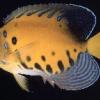Weekly Update - 11th Jan to 17th Jan 2010
-
Topics
-
Latest Update
-
0
Love spells in Fourways +27836216186
Love spells in Gauteng +27836216186 that work quickly have been a powerhouse for many successful relationships for ages, request this spell for happiness in love. Getbackexlover.com This is because these love spells are cast with immense love magic powers specifically to make two people fall deeply in love with each other. that work quickly has been a powerhouse for many successful relationships for ages, request this spell for happiness in love. Getbackexlover.com- love spells
- healer
- (and 5 more)
-
0
Love spells in Kempton park +27836216186
Love spells in Kempton park +27836216186 that work quickly have been a powerhouse for many successful relationships for ages, request this spell for happiness in love. Getbackexlover.com This is because these love spells are cast with immense love magic powers specifically to make two people fall deeply in love with each other. that work quickly has been a powerhouse for many successful relationships for ages, request this spell for happiness in love. Getbackexlover.com- love spells
- bring back lost lover
- (and 8 more)
-
0
Love spells in Centurion +27836216186
Love spells in Centurion +27836216186 that work quickly have been a powerhouse for many successful relationships for ages, request this spell for happiness in love. Getbackexlover.com This is because these love spells are cast with immense love magic powers specifically to make two people fall deeply in love with each other. that work quickly has been a powerhouse for many successful relationships for ages, request this spell for happiness in love. Getbackexlover.com -
0
Love spells in Midrand +27836216186
Love spells in Midrand +27836216186 that work quickly have been a powerhouse for many successful relationships for ages, request this spell for happiness in love. Getbackexlover.com This is because these love spells are cast with immense love magic powers specifically to make two people fall deeply in love with each other. that work quickly has been a powerhouse for many successful relationships for ages, request this spell for happiness in love. Getbackexlover.com -
15
-







Recommended Posts